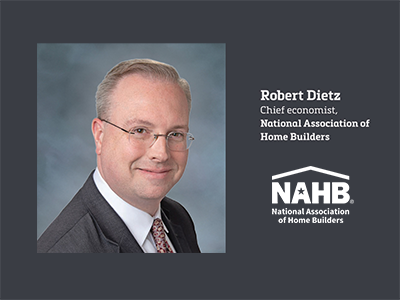2024 Home Building in Review: A Year of Careful Resilience
 The 2024 residential construction market was marked by a mixture of cautious optimism and ongoing challenges. Single-family starts are seeing a slow yet steady recovery after the pandemic-driven slowdown, but the pace remains below historical norms.
The 2024 residential construction market was marked by a mixture of cautious optimism and ongoing challenges. Single-family starts are seeing a slow yet steady recovery after the pandemic-driven slowdown, but the pace remains below historical norms.
Housing affordability continues to be a significant concern, influenced by both the cost of construction and higher interest rates, which dampen buyer demand. However, the demand for housing remains strong in many areas, fueled by demographic shifts and the continued need for new housing stock.
According to NAHB estimates, the nation continues to struggle with a housing deficit of 1.5 million homes. This deficit is the result of a decade of under-building that began in the year following the Great Recession. The scarcity of construction was due to persistent supply-side constraints, including costly and inefficient tax, land, and construction policies.
Home builder confidence has remained relatively stable but low, with builders cautiously moving forward, balancing between optimism about long-term demand and concern over the immediate challenges. In particular, builder sentiment is constrained by financing difficulties, as many builders face the dual challenge of securing capital for new projects while navigating the uncertainty of a more volatile lending environment.
- Single-family: Although showing signs of improvement, single-family home building remains constrained by high mortgage rates, labor shortages, and rising material costs. However, 2024 experienced an expansion for single-family starts, with single-family home building up 10% on a year-to-date basis as of the September data. NAHB is forecasting a final 2024 growth rate of approximately 5% for single-family home building.
- Custom: Custom home building has seen some growth in recent years, though it is concentrated in higher-end markets. Total builds on an owner’s lot totaled 180,000 homes over the last year via the mid-2024 data, marking flat but solid conditions for this market segment dominated by smaller, private builders.
- Townhouses: Townhouses offer a more affordable alternative to single-family homes and a way to build with additional density. They continue to be a more attractive option in many markets, with increased production seen in suburban and edge-city locations. The market share for townhouses in the single-family building space is currently 17%, a high mark in the last four decades.
- Built-for-rent (BFR): BFR developments, which offer single-family homes for rent rather than for sale, are gaining traction as they provide an alternative to traditional apartment living. This model appeals to a broad demographic, from young families to older adults who want to avoid the long-term financial commitment of homeownership. As of the mid-year data, BFR development is up 10% from a year prior per NAHB analysis of Census data.
- Multifamily: Multifamily construction has shown significant weakness, with NAHB forecasting an approximate 30% decline for apartment building for the 2024 data. At the end of 2023, there was a 50-year high for the number of apartments under construction (1 million). Multifamily developers are focused on delivering units in a timely manner, but delays from labor and material shortages continue to plague the sector.
- Remodeling: Remodeling activity has been solid in 2024, with home owners increasingly choosing to invest in upgrades rather than pursue new home purchases. This trend is partly driven by the high cost of moving, as well as a tight housing inventory. Older homes are being renovated to meet modern preferences for energy efficiency, home office space, and outdoor living.
One of the key takeaways from 2024 is the continued tension between strong demand for housing and the challenges of delivering new homes at scale. Builders are facing a confluence of issues — higher borrowing costs, tight labor markets, and rising material prices — that makes it difficult to meet the growing need for housing. At the same time, the desire for more affordable, flexible housing solutions has led to the growth of townhouse developments, multifamily projects, and built-for-rent models.
As the market adapts to these challenges, the residential construction industry remains in a delicate balancing act, striving to meet demand while managing the constraints of an unpredictable economy and a constrained labor market.
This post has been excerpted from an article by NAHB Chief Economist Dr. Robert Dietz in the December 2024 issue of Builder & Developer magazine. Read the full article here.
